A couple of months ago, amongst the usual mishmash of newsletters and easy-to-ignore offers in my inbox, I got an interesting email from Makerversity, where I rent space at Somerset House. It was about the 4th John Ruskin Prize, a joint effort by The Guild of Saint George, The Big Draw and Museums Sheffield. Named after the Victorian art critic, author, patron, artist and philanthropist, this year's theme — Hand & Eye: Master of All Trades in the Age of Jack — revolves around the Artist As Polymath.
The email couldn't have come at a better time. The last year has involved a lot of soul-searching for me. I have moved somewhere new, big and daunting. I am both more certain about where my skills lie as a designer, and more uncertain about how to express them. And I really want to push myself to express my artistic impulses through new forms of design.
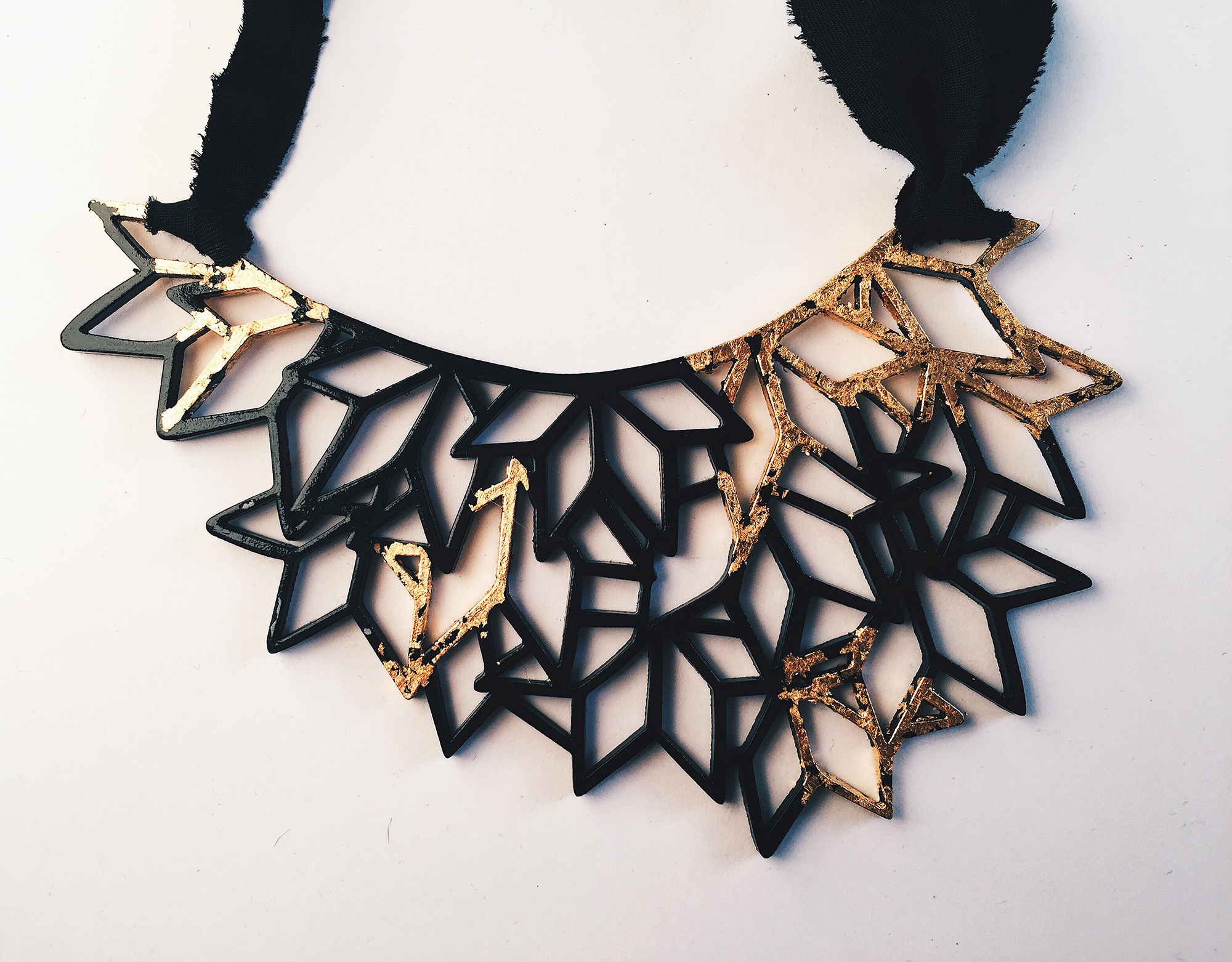
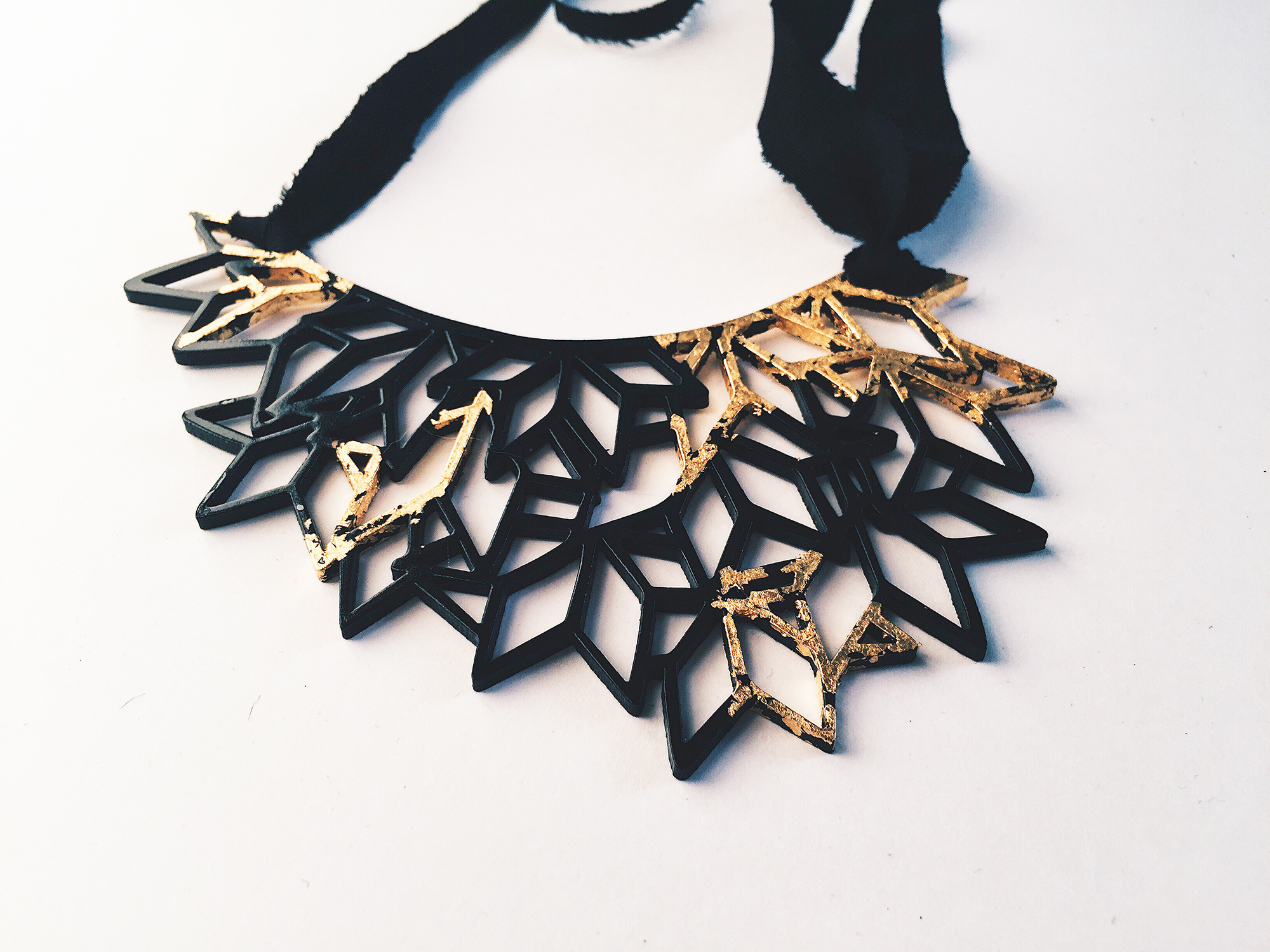

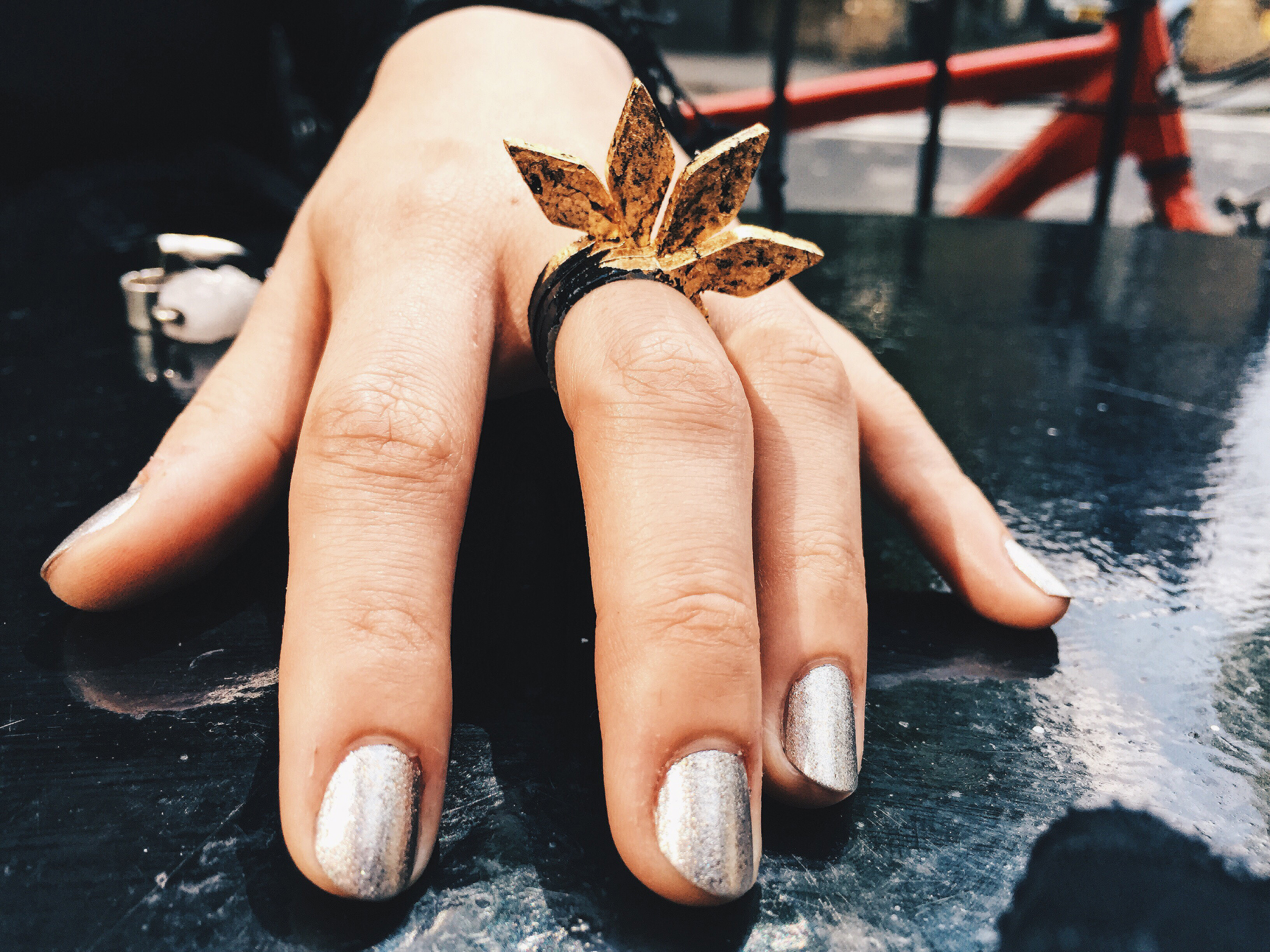
Now that I live in London, I have been thinking a lot about how I connect to my Lebanese roots, and more specifically I have been mining my childhood for meaning. And I found it in the unlikeliest of places. Meaning in the carved diamond shapes get cut onto the surface of a pan of baked kibbeh by my grandmother in the village of Kaytoule. Shapes I was never allowed to help with until I reached a certain age and was allowed to participate in the ritual. Meaning in the gentle clanging together of the beads on my grandfather's misbaha beads.
The pieces I would end up creating would bring together research into Lebanon's culinary history & its religious totems. It would involve putting together my recollections of sounds and smells from my childhood 3000 kilometers — and 20 years — away into a daily journal.
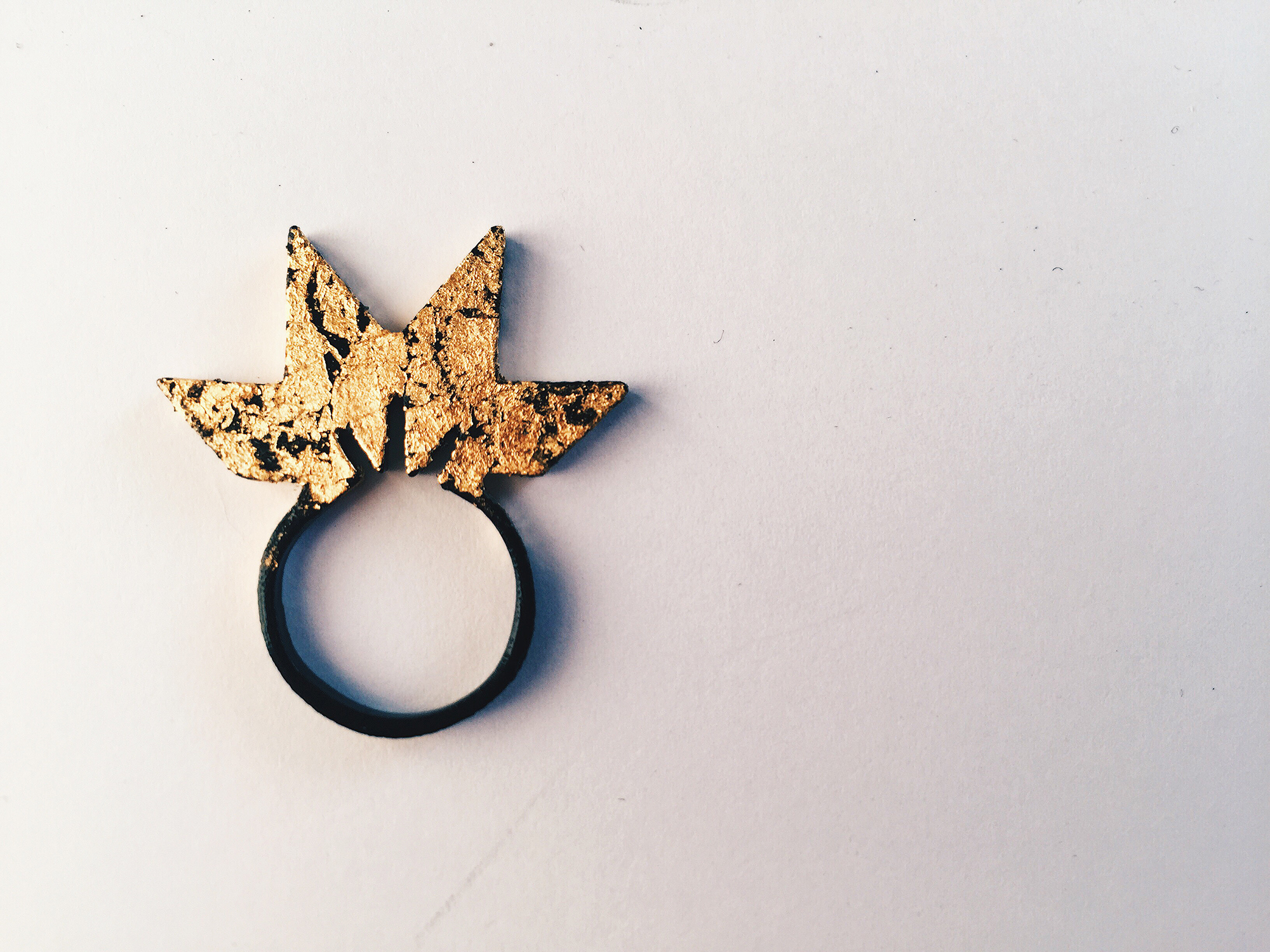
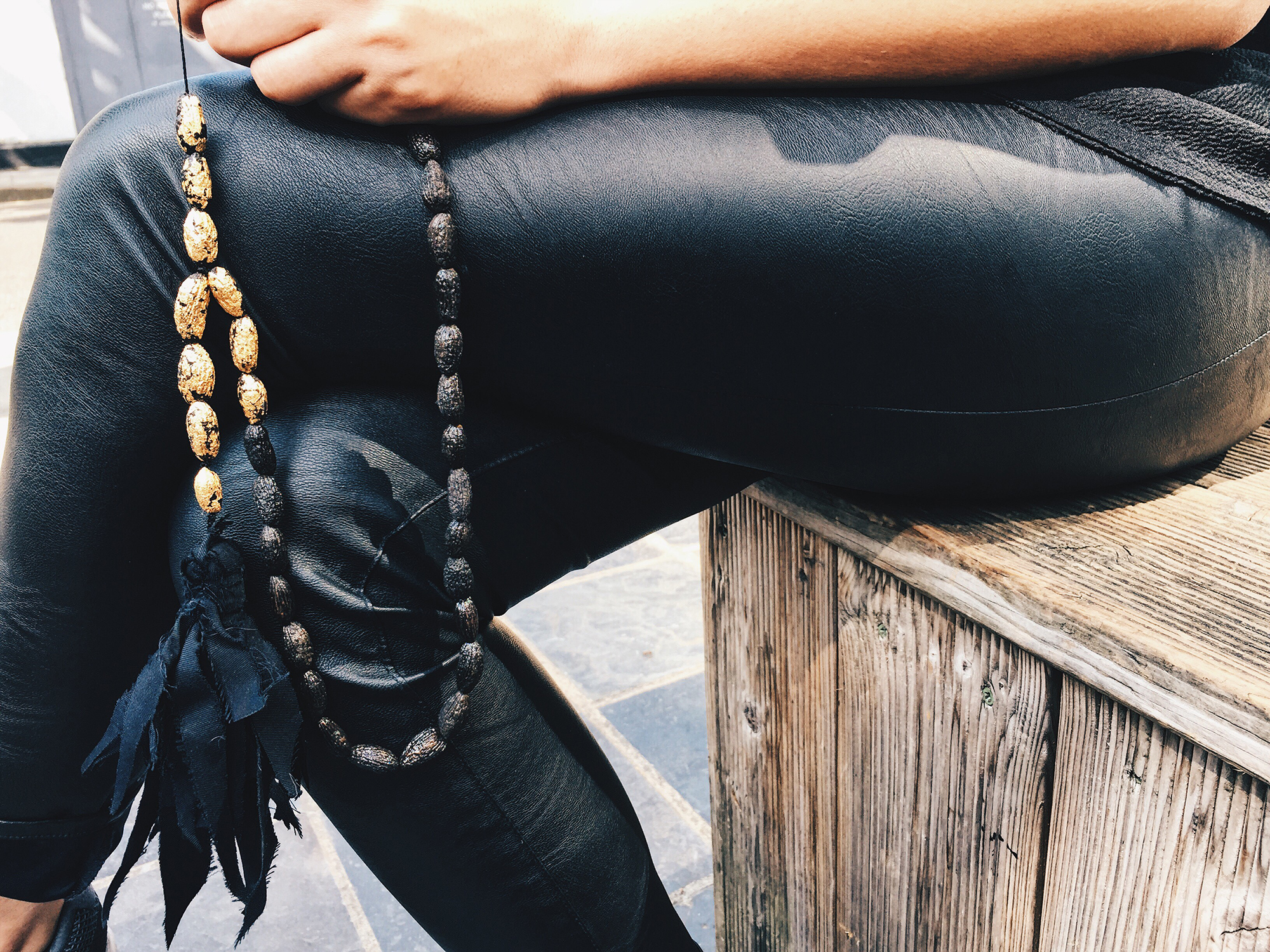
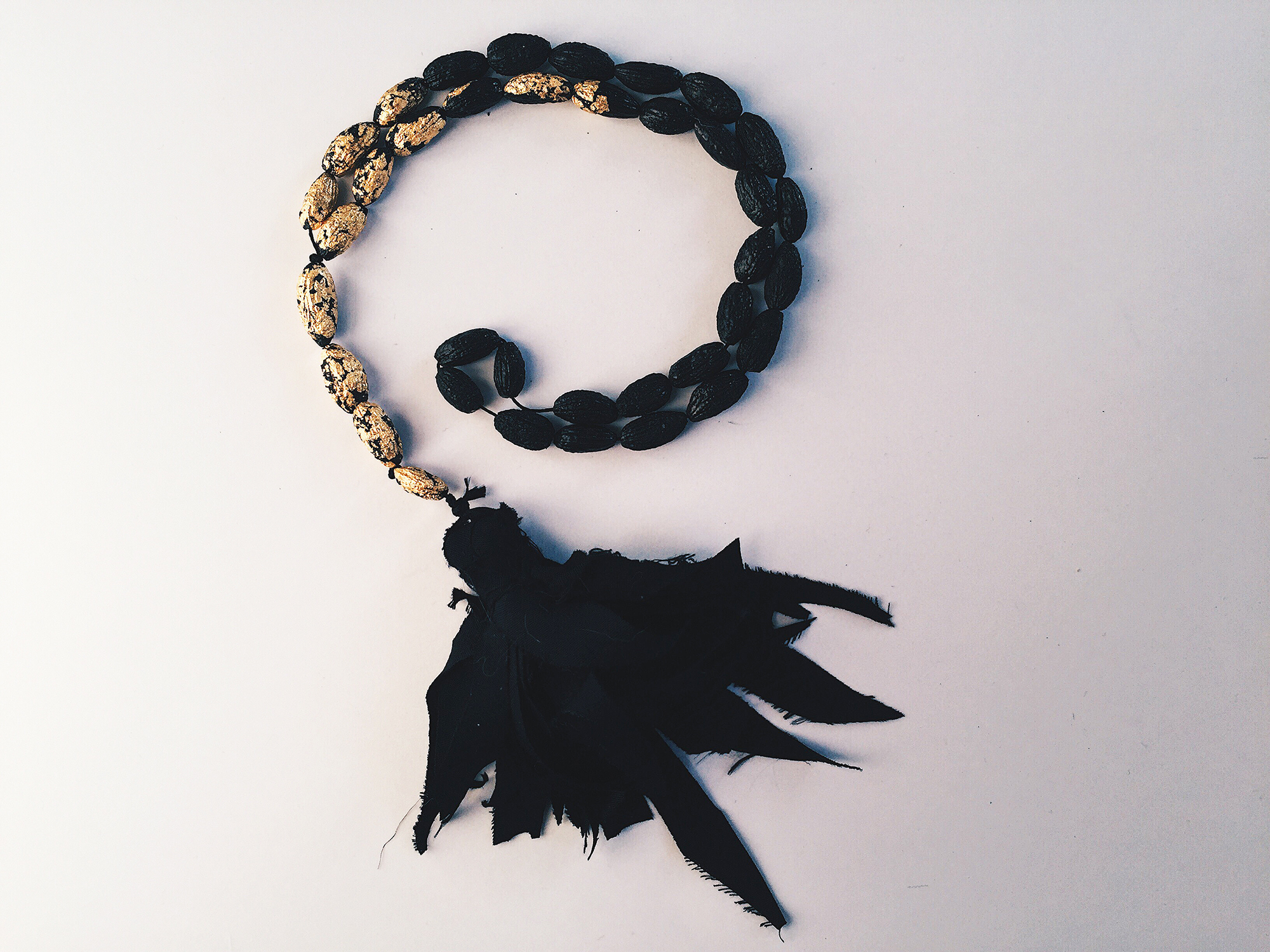
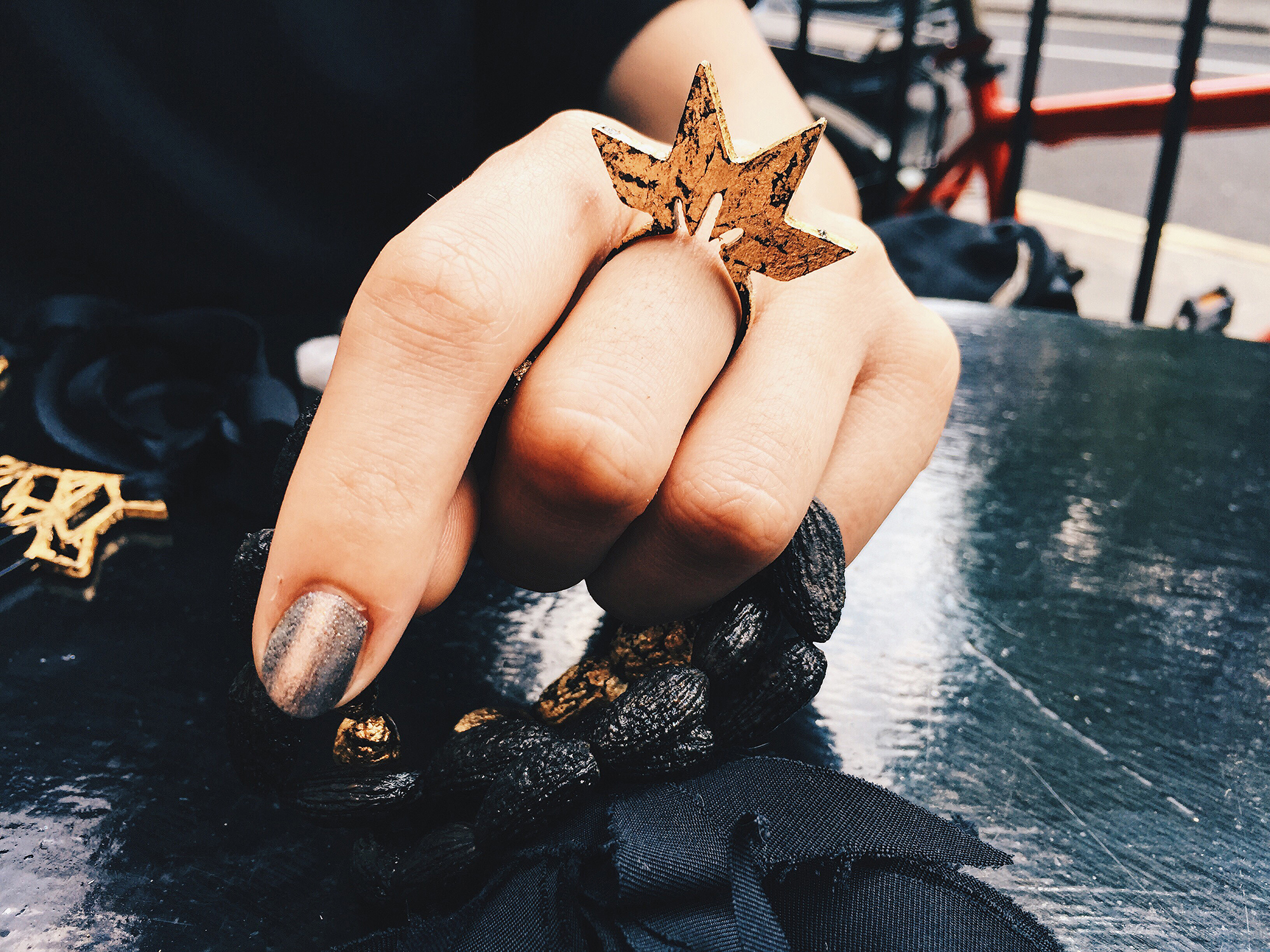
Starting with sketches and vague recollections, I began to wonder where I would go with this. I took my sketches and started manipulating them in Illustrator, creating prints. But they seemed too clean-cut. So I took the computer-generated print and started drawing it by hand. That process of distillation through the machine is what helped me come up with the defining shape for a necklace and rings. Now armed with the second hand-drawing, it went back into Illustrator to form the basing for the laser cutting of the piece itself. Again, the distillation process meant that the laser-cut result, normally perfect, retained the imperfections of my hand-drawing.
I cut the pieces in medium-density fiberboard. Because it absorbs humidity easily, I sprayed it with a lacker coat and then black paint. I added gold leafing as a means of embellishment. Black representing my memories of the 90s in Lebanon, and imperfect gold sprinkles my attempt at reclaiming that space in the time-honoured tradition of gold embellishment.
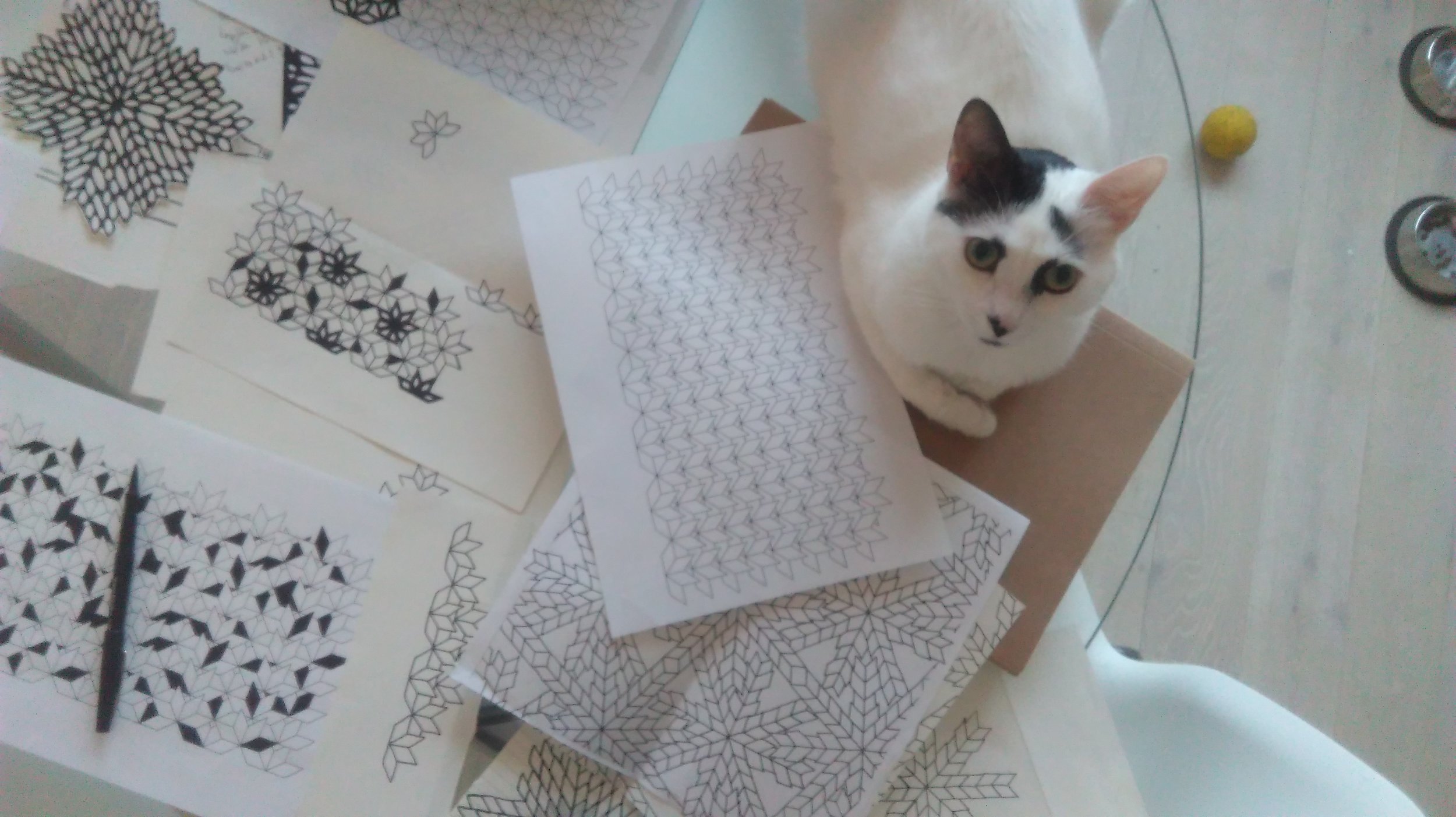
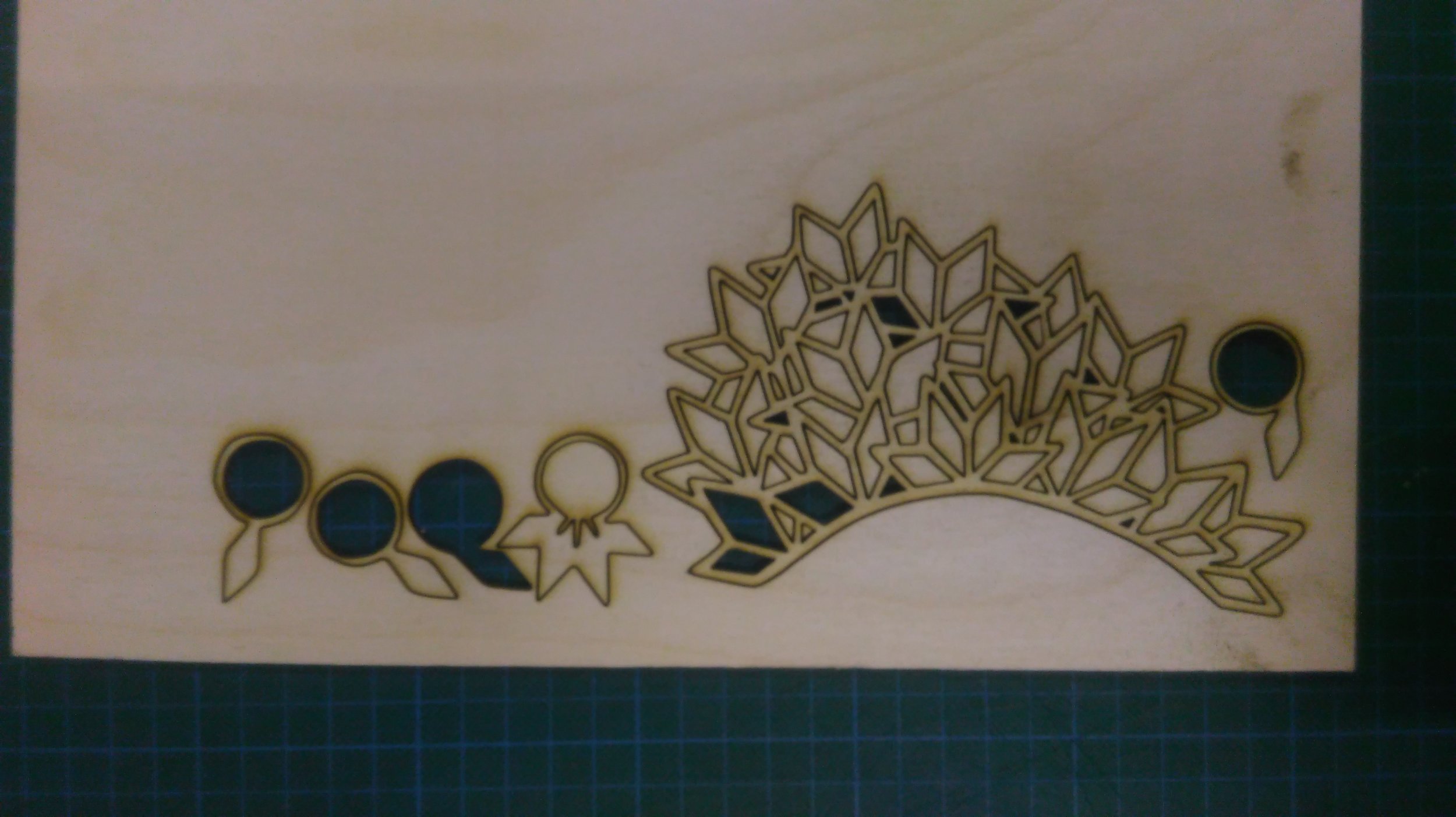
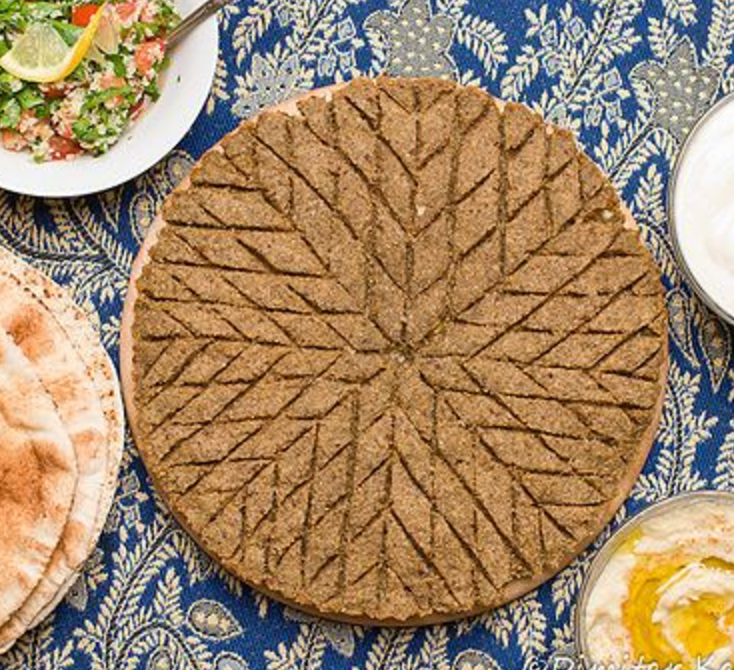

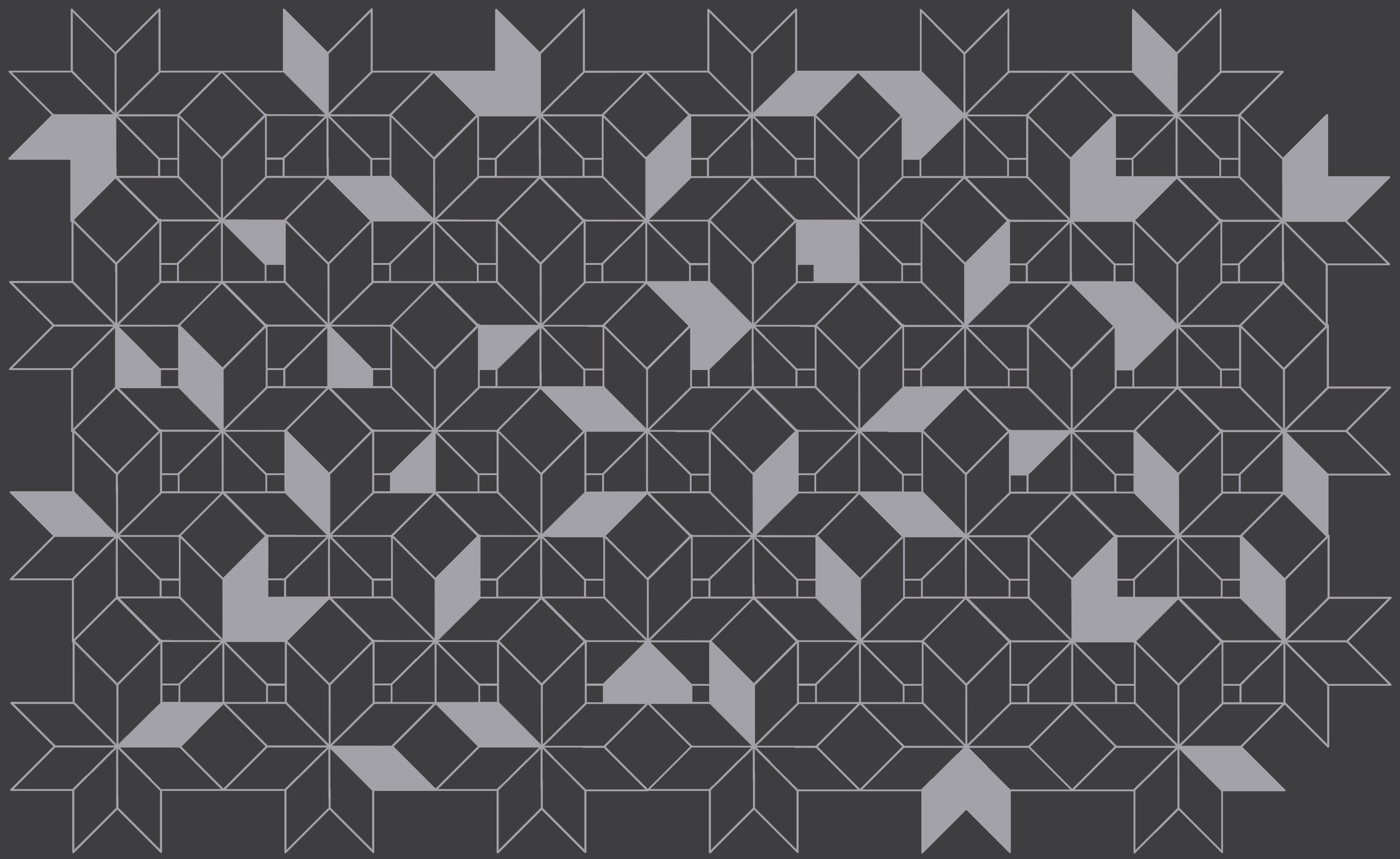
When it came to the misbaha, besides remembering it in my grandfather's hands, I didn't know much beyond that. Researching I realized all religions had prayer beads, so I wanted to understand what Lebanese ones special. I found out that they used to be made out of olive pits. So I decided to use that technique, since olive pits are normally a waste product. I gathered pits, washed them, drilled holes with small specialized hand drill, painted them black with wood dye. I applied golf leaf again and half-coated them with a glossy finish. I threaded it all with silk thread and used leftover black fabric from my studio to create the tassel.
